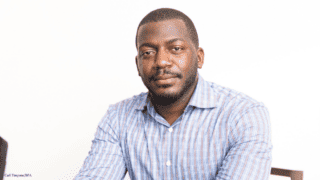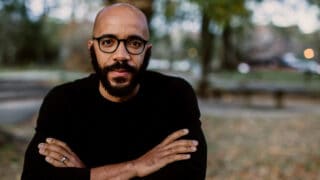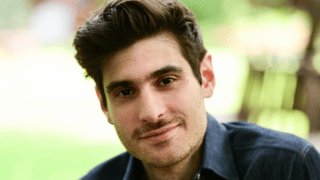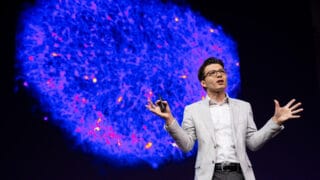The Lavin Agency Speakers Bureau
A speakers bureau that represents the best original thinkers,
writers, and doers for speaking engagements.
A speakers bureau that represents the best original thinkers,
writers, and doers for speaking engagements.
An unlikely ally in fairness—the microbiome—may hold the key to a more transparent business world.
How can we create sustainable cities and healthier buildings—including classrooms, hospitals, offices, and homes—by studying microbes? TED Senior Fellow Jessica Green explains how in visually rich talks that chart the frontier of bio-inspired design. She examines microorganisms to touch on deeper questions about humanity: What does it mean to be an individual? Where does your identity begin, and where does it end?
Jessica Green is a world renowned scientist inspiring people to think about bacteria in entirely new ways. A faculty member at the Santa Fe Institute, Green is helping us see how the microbial blueprint of our bodies, homes, cities, and forests impacts our world, and our future. As co-founder and CEO of Phylagen, a DNA data harvesting and analytics company, Green envisions a future for urban design that promotes sustainability, human health, and well-being. The company equips organizations with the power of environmental genomics and data to answer critical questions, and was recently named a Technology Pioneer by the World Economic Forum. The award recognizes Phylagen for its contributions to understanding indoor environmental quality, and using microbiome technology as a traceability method throughout supply chains.
Green is currently spearheading efforts to model urban spaces as complex ecosystems that house trillions of diverse microorganisms interacting with each other, with humans, and with their environment. She calls it the “built environment microbiome.” In addition, she is co-creating a graphic novel about the urban microbiome with graphic designer Steve Green and writer and TED Fellow Anita Doron.
Green is internationally recognized for highly cited publications in Nature, Science, and the Proceedings of the National Academy of Sciences. Her work has been featured in TIME, The Today Show, CNBC, NPR, Forbes, Discover, Scientific American, and The Economist. She is the recipient of the Blaise Pascal International Research Chair, the John Simon Guggenheim Memorial Foundation Fellowship, and a TED Senior Fellowship. She is the former Alec and Kay Keith Professor of Biology at the University of Oregon, where was also a founder and former director of the Biology and the Built Environment (BioBE) Center. There, Green worked with architects and engineers to advance our understanding of how microbial communities assemble, interact, evolve, and influence public health. She earned an M.S. in Civil/Environmental Engineering and Ph.D. in Nuclear Engineering, both at the University of California, Berkeley.
New York Times bestselling author of Charged New York Times Magazine staff writer Political Gabfest co-host

Author of The State Must Provide: The Definitive History of Racial Inequality in American Higher Education Staff Writer at The Atlantic

#1 New York Times Bestselling Author of How the Word Is Passed and Above Ground Atlantic Staff Writer

Author, A Brief History of Intelligence AI Entrepreneur and Founder of Bluecore Forbes 30 Under 30 Honoree

New York Times Visionary in Medicine and Science Founding Director of Stanford Brain Organogenesis Knight of the Order of Merit
Evolutionary Biologist Author Founder of Tangled Bank Studios Executive Producer of Oscar-Nominated and Emmy-Winning Documentaries
Microsoft VP of Design and Artificial Intelligence Author of How to Speak Machine

Global AI Advisor CEO & Co-Founder of XLabs and Ribo One of Forbes’ 30 Women in AI to Watch Artificial Intelligence Pioneer
World Renowned Expert on Innovation Former Chief Disruptor at Autodesk Author of The Future of Making

Author of Grit, the #1 New York Times Bestseller | Pioneering Researcher on Grit, Perseverance, and the Science of Success

Pulitzer Prize-Winning Creator of The 1619 Project | Executive Producer of the Emmy Award-Winning 1619 Project Hulu Docuseries | MacArthur Genius
Nike's Former Chief Marketing Officer | Author of Emotion by Design

New York Times Bestselling Author Of All Boys Aren’t Blue and We Are Not Broken | Emmy Nominee | LGBTQIA+ Activist
CEO of The Atlantic | Former Editor-in-Chief of WIRED

What if we could accurately trace the origin story of every single product? With Jessica Green’s new project, we can—by using microbiomes.
Global supply chains are getting harder to trust. Consumers ask: was this t-shirt made by slaves? Companies ask: were my goods made from verified, high quality sources? Governments ask: where did this ship actually come from? Despite regulations and policies, it’s hard to trace—but embedded in each and every object are microorganisms, which we can harness as tracing technology. By analyzing a product’s microbiome, we can find out where exactly in the world a product has been, to answer all of these questions and more: determining whether your organic cotton shirt was actually grown on an organic farm, or whether your fair trade apparel was truly produced equitably.
In this talk, Green explores how, by combining microbiome technology with AI, we can uncover invisible patterns across objects, materials, and places to track how things move around the world. It’s a highly-scalable solution that will gain new insights into the true provenance of our products; enhance trust; expose corruption; and make for a fairer, more equitable supply chain.
As DNA sequencing research continues to break new ground, scientists are ever more aware of how our planet’s biochemical processes are ruled by microbes—both harmless species and those that make us sick. Understanding this unseen microbial ecology—a teeming web of trillions and trillions of organisms, on every surface, substance, creature, and in the air around us—has both micro and macro implications. In other words, new technology is changing how we care for individuals, but also how we design the megacities in which we live, work, and play.
Our unprecedented move to urban centers has caused a corresponding shift in the urban genome. The question is: can we engineer our cities to take advantage of these new discoveries? Can we create healthier, more sustainable cities by mapping the hidden dance of microbes in our midst? In this expansive keynote, Jessica Green helps urbanists, city planners, landscape architects, and health care workers create metropolises that take advantage of our new awareness of metagenomics. How does our proximity to green space and plant life, processing plants and freeways, sewage centers and subway lines, skyscrapers and animal life affect our health? And what can our city structures teach us about the prevention of disease: from both airborne pandemics to illnesses caused by the spread of antibiotic resistance?
Knowing our city’s microbial health is the next frontier of urban planning and architecture. For all those invested in the health, sustainability, and ecology of our urban environments, Jessica Green’s poignant talks are indispensable.
More than ever, we spend our lives indoors. Our apartments, offices, and hospitals keep us densely packed, surrounded by our neighbors and coworkers, breathing recycled air and making continual physical contact. Our sealed-off environments mean our lives are radically different from our ancestors, or even recent generations—but what does this mean on a microbial level? And what does this mean for our health and well-being as city populations continue to explode?
In this mind-opening keynote, Jessica Green explores how a deeper understanding of microbes can help us create healthier buildings (and thus enjoy healthier lives, in and outside of work). This means reimagining how we design structures, air flow, plant life, and communal spaces to control allergens, viruses, bacteria, fungi, and other microbial forces. As we spend money on weatherizing and air conditioning our homes, designing layouts in offices to stimulate creativity, and creating clinics and labs in sterile environments, we must also turn to leading scientists like Green to discover how the invisible world has a profound aspect on our daily lives.
This talk has major implications for architects, designers, and health care professionals interested in making better, healthier buildings. It also comes with important takeaways for business leaders and HR professionals. If we can improve indoor environmental quality, we can improve the health and productivity of our employees, making ‘building wellness’ not only a matter of science, but of economics and finance as well.